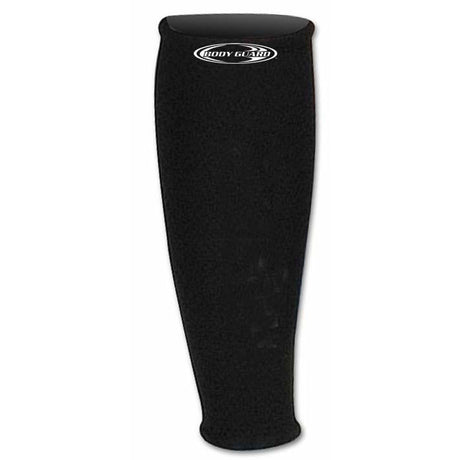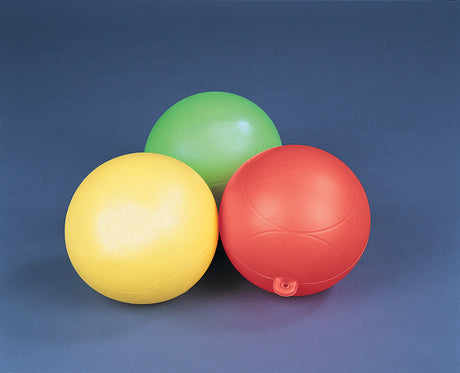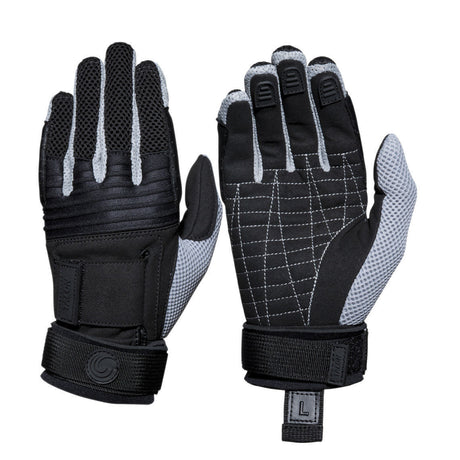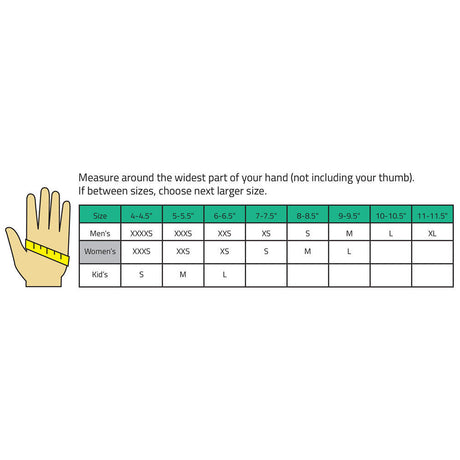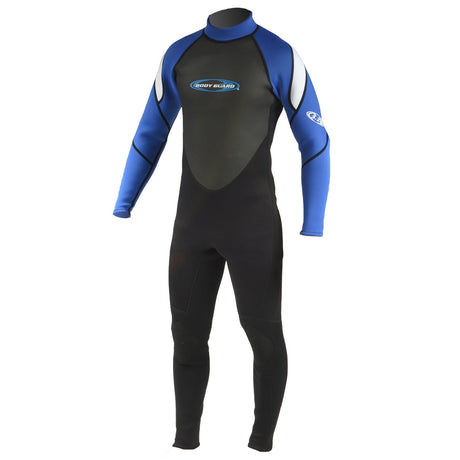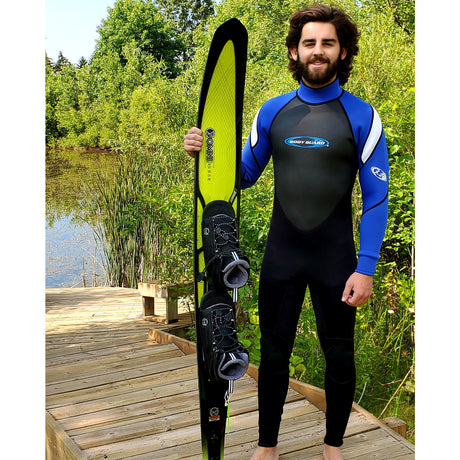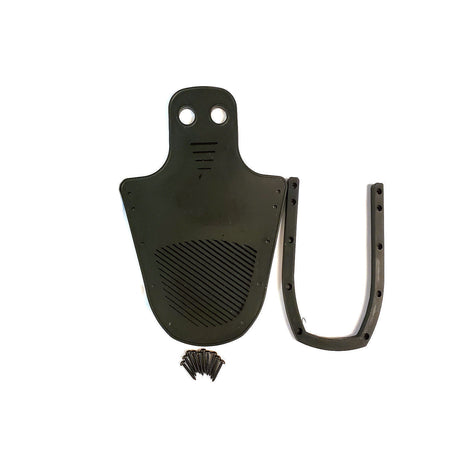If you're new to slalom water skiing, you might be stuck on boots and bindings. What's the best setup? Should you wear two boots, or a boot and rear toe plate? Let's discuss.
But wait, are you new to ski bindings? If you're not sure what a rear toe plate is, read our other guide first: Types of Water Ski Boots & Bindings Compared.
Double Boots: The Advantages
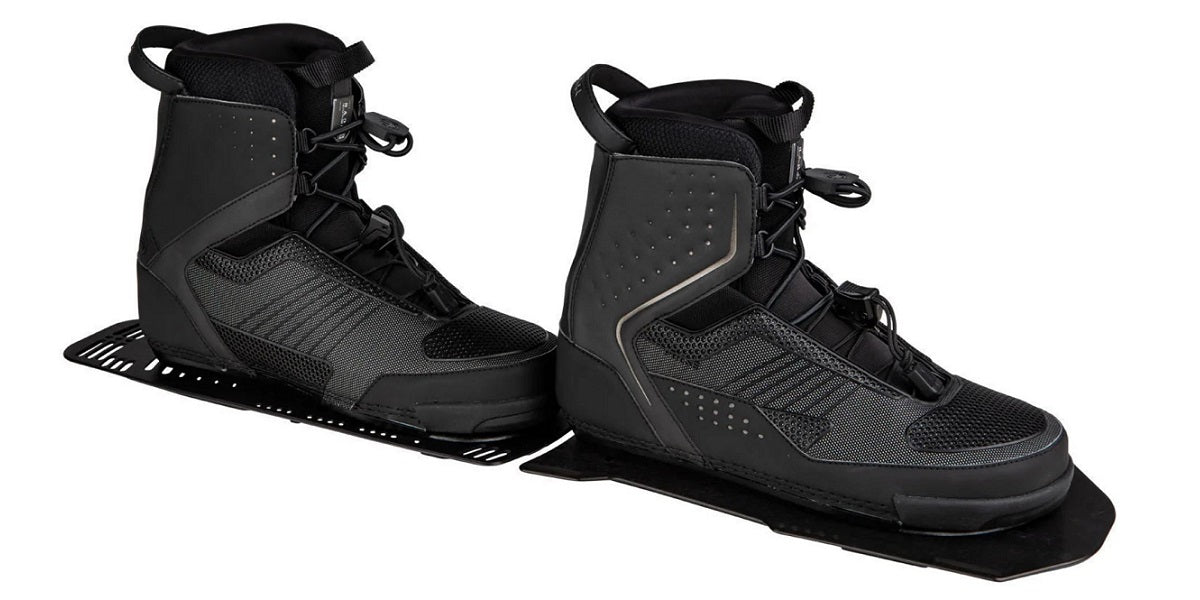
Although most recreational skiers now rely on a boot-and-rear-toe combination, there are plenty of good reasons to consider a double boot setup for your ski bindings:
Two boots provide better control
The biggest advantage of skiing with double boots is the extra control and stability you get. Rear toe straps don't secure the foot to the board like a boot, allowing the heel to rise and the entire foot to move freely within the rear binding.
The double boot setup provides a stronger connection between both feet and the ski. By locking the rear foot to the back half of the ski, the rider can more easily carve and "rock" the ski up or down, improving control in corners and allowing for quicker transitions when attempting tight turns.
This extra control and is why many advanced skiers and tournament riders rely on the double boot setup.
It feels more like wakeboarding
Plenty of slalom water skiiers also wakeboard, which requires the use of two boot bindings. Perhaps you even started out wakeboarding before jumping on a ski. If that's the case, you'll probably prefer double boots when skiing, too. It'll feel more familiar and, if you're just learning to water ski, relying on a familiar setup might make your experience easier and more enjoyable.
Double boots may be safer when falling
Some skiers prefer having both feet locked to their ski when falling. This allows the energy of a crash to be dispersed between both bindings and, thus, both feet and legs.
This reduces the chances of injuring an ankle or knee. Keeping both feet locked to the ski during a fall also prevents the ski from flailing around, twisting your leg, and striking you in the body or head.
Double Boot Disadvantages
Wearing two boots instead of using a rear toe strap does come with some drawbacks and inconveniences, though.
It's harder to start with two boots
Skiing with two boots provides less freedom of movement than when using a rear toe. This can make getting up and on top of the water can be more challenging.
It's not as convenient as a rear toe
Lacing up and locking into two boots takes more time. Compared to a rear toe, it's simply less convenient to get strapped up with two laced bindings.
Boot and Rear Toe: The Advantages
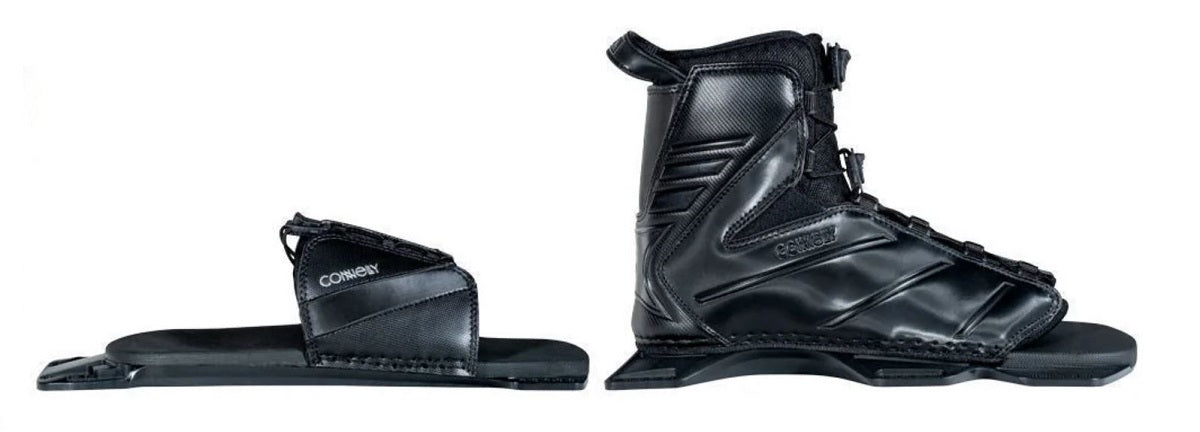
The boot-and-rear-toe setup is generally more popular among slalom water skiers. Even some top-tier, professional skiers (like Will Asher) prefer a rear toe strap. Here's why:
Rear toes make for easier skiing
For casual skiing and basic carving, the rear toe strap is easier to use. It provides greater freedom of movement and it allows the rider to make adjustments to their stance and foot placement. Being able to make these adjustments allows the rider to shift their center of gravity on the fly.
It's also easier to get up on the water and moving with a rear toe, which can make learning to ski easier for beginners.
Rear toe straps are more convenient
Sliding your foot in and out of the rear binding is far more convenient than having to lace and and loosen two boots. That can make recovering from falls easier, and it allows you to keep one foot free while getting in and out of the water.
A rear toe can improve your skiing ability
Advanced skiers who transitioned from a rear boot to a rear toe strap (like Tom Brantley) realized something important, and unexpected: They were relying on their rear foot as a sort of crutch when skiing fast.
“Like a lot of skiers, when I got into trouble, I’d go straight to my back foot,” Brantley said. “It was my internal default.”
Using a rear boot can encourage heavy back-foot turns when you have poor balance. But this habit reduces speed and control, and ultimately harms your ability to turn with good stability.
Skiing with a rear toe strap forces you to work on having better balance atop the ski which, over time, improves your overall ability.
Rear Toe Disadvantages
Like all other ski bindings, rear toe straps aren't without their drawbacks. Here are some of the disadvantages of running a rear toe instead of a rear boot:
Rear toe straps provide less control
When you're skiing at the limits, a rear toe affords less high-speed maneuverability and control. You don't have the advantage of using your rear foot to push or pull on the rear half of the ski as effectively as with a boot. This forces you to be more reliant on your front foot when it comes to making turns and transitioning.
Injury during falls could be more likely
The phrase "one in, one out" refers to one foot coming free from its binding, while the other foot remains locked to the ski. This is far more like to occur when falling and crashing while running a rear toe. This also increases the chance of injury:
When the rear foot falls out of the toe strap and the front foot remains locked in its boot, the ski is free to twist violently in the water. This can lead to a broken ankle, fractured leg, or injured knee or hip.
However, "one in, one out" crashes can be avoided by ensuring the laces on the front boot aren't excessively tight. When using a rear toe strap, proper lacing of the front boot can help ensure both feet leave both bindings during a big crash, significantly reducing the risk of an injury.
The Happy Medium: A Hybrid Rear Toe

This rider is wearing the Radar Vector Hybrid Rear Toe, or "HRT". Hybrid rear toes seek to combine the best of both rear toes and rear boots, while reducing or eliminating the drawbacks of both.
The HRT provides the easy "slip on, slip off" features of a rear toe strap, making it easier to put on and remove than a full boot. It also has a low ankle and open toe box, providing greater freedom of movement than a boot.
But, like a boot, the HRT provides far more support than a standard toe strap. With BOA laces, the rider can easily tighten the binding to their foot to achieve that solid lock-up a full boot provides.
The HRT's low ankle and rear heel provide the perfect in-between solution, giving you the ability to pull and push on the back half of the ski, while allowing you to shift your weight and rotate more freely.
Learn more about binding types and sizes
There are also adjustable rear toe straps. These are fully open, but they use laces to provide a tighter fit. We cover all the types of ski bindings in this guide.
Getting the right size bindings is just as important. If you're shopping for boots and rear toes, make sure you pick the right size based on brand with our ski binding size guide.



